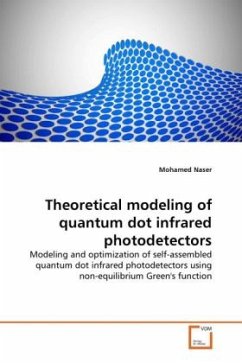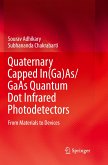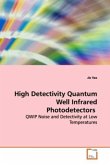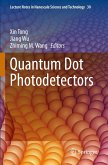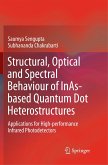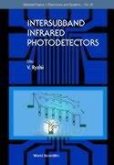Quantum dot infrared photodetectors (QDIPs) have emerged as a promising technology in the mid- and far-infrared (3-25 m) for applications in medical and environmental sensing. In this book, a detailed theoretical model based on non-equilibrium Green's functions (NEGF) has been developed to electrically and optically characterize different QDIP structures. The advantage of the model over previous developed classical and semi-classical models is that it fairly describes quantum transport phenomenon playing a significant role in the performance of such nano-devices and considers the microscopic device structure. The model is fully quantum mechanical, including interactions with the lattice and with the light. The differential equation of the retarded Green's function is solved numerically using the method of finite differences. The NEGF model calculates the localized density of states, the operating wavelengths for intersubband transitions, the responsivity, the dark and photocurrent, and the detectivity at different design parameters. The model can be used as a tool for characterization and optimization of QDIPs.
Bitte wählen Sie Ihr Anliegen aus.
Rechnungen
Retourenschein anfordern
Bestellstatus
Storno

